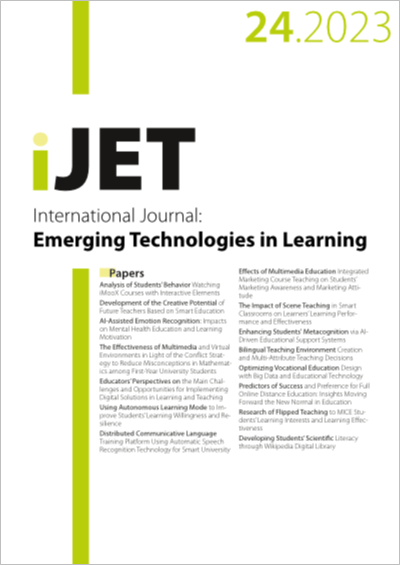Optimizing Vocational Education Design with Big Data and Educational Technology
DOI:
https://doi.org/10.3991/ijet.v18i24.45649Keywords:
big data, vocational education, course design, BTM & GloVe, DIN recommendation algorithm, GRUAbstract
Amidst the rapid advancements in big data and internet technologies, profound transformations have been witnessed in modern societal and economic structures. Vocational education, a pivotal component within the educational domain, faces challenges in course design and optimization. While the majority of existing research focuses on utilizing educational technology to optimize courses, most methodologies still rely on traditional data analysis and mining techniques, with little exploration of deep learning and big data technologies. This research proposes a novel strategy for course design and optimization. Initially, the course theme optimization is addressed through a short text clustering algorithm that utilizes a linear fusion of the biterm topic model (BTM) and global vectors for word representation (GloVe) similarity. Subsequently, course content is planned using a deep interest network (DIN) recommendation algorithm in conjunction with the gated recurrent unit (GRU) time series model. This study provides the vocational education sector with a new perspective on course design and optimization, which has important theoretical and practical implications.
Downloads
Published
How to Cite
Issue
Section
License
Copyright (c) 2023 Nan Zhang (Submitter); Zhongqi Cai

This work is licensed under a Creative Commons Attribution 4.0 International License.



